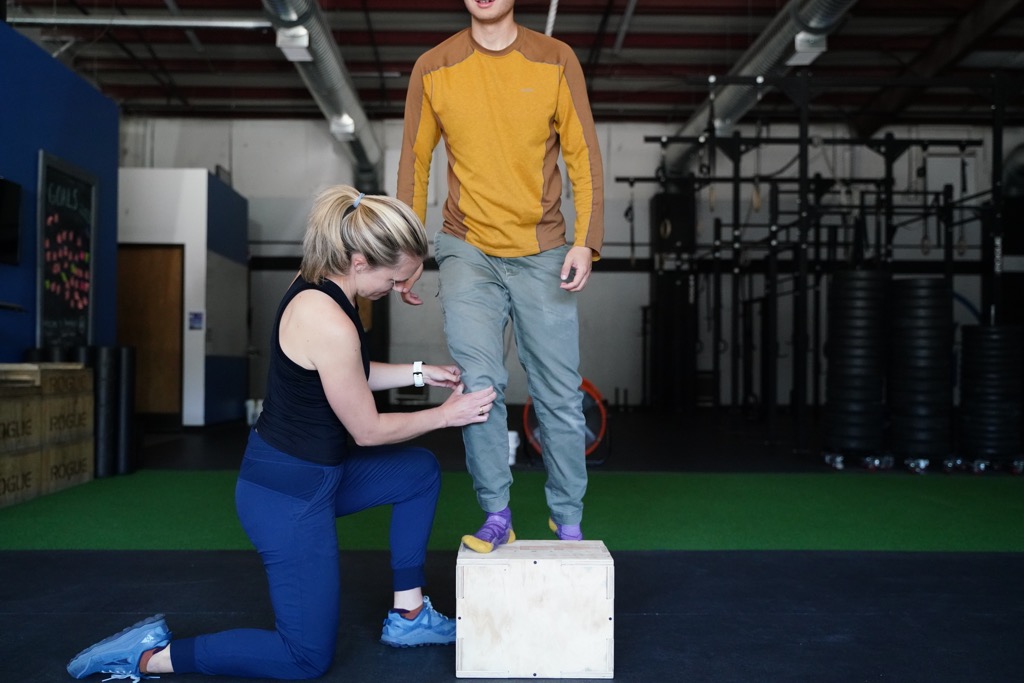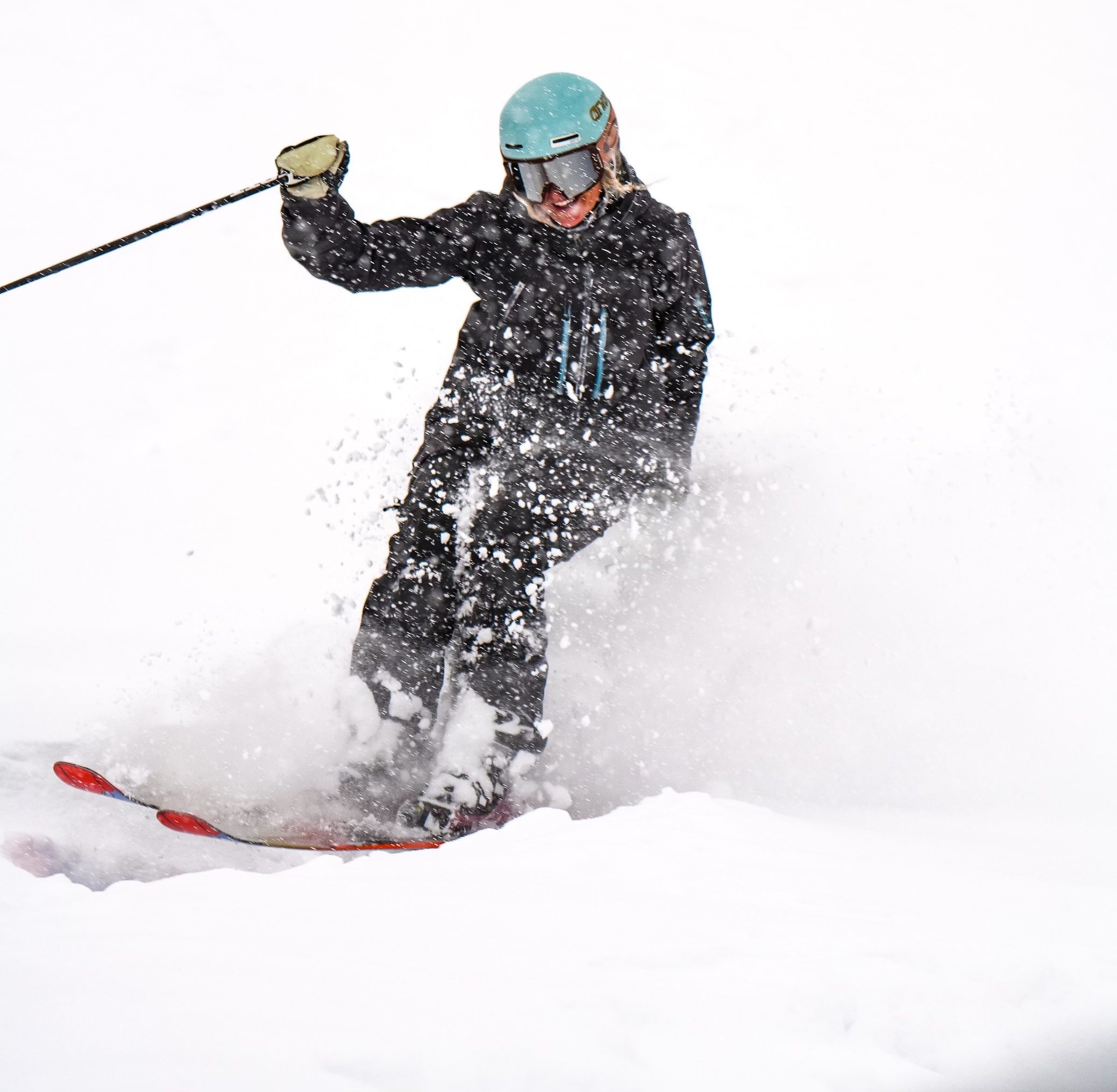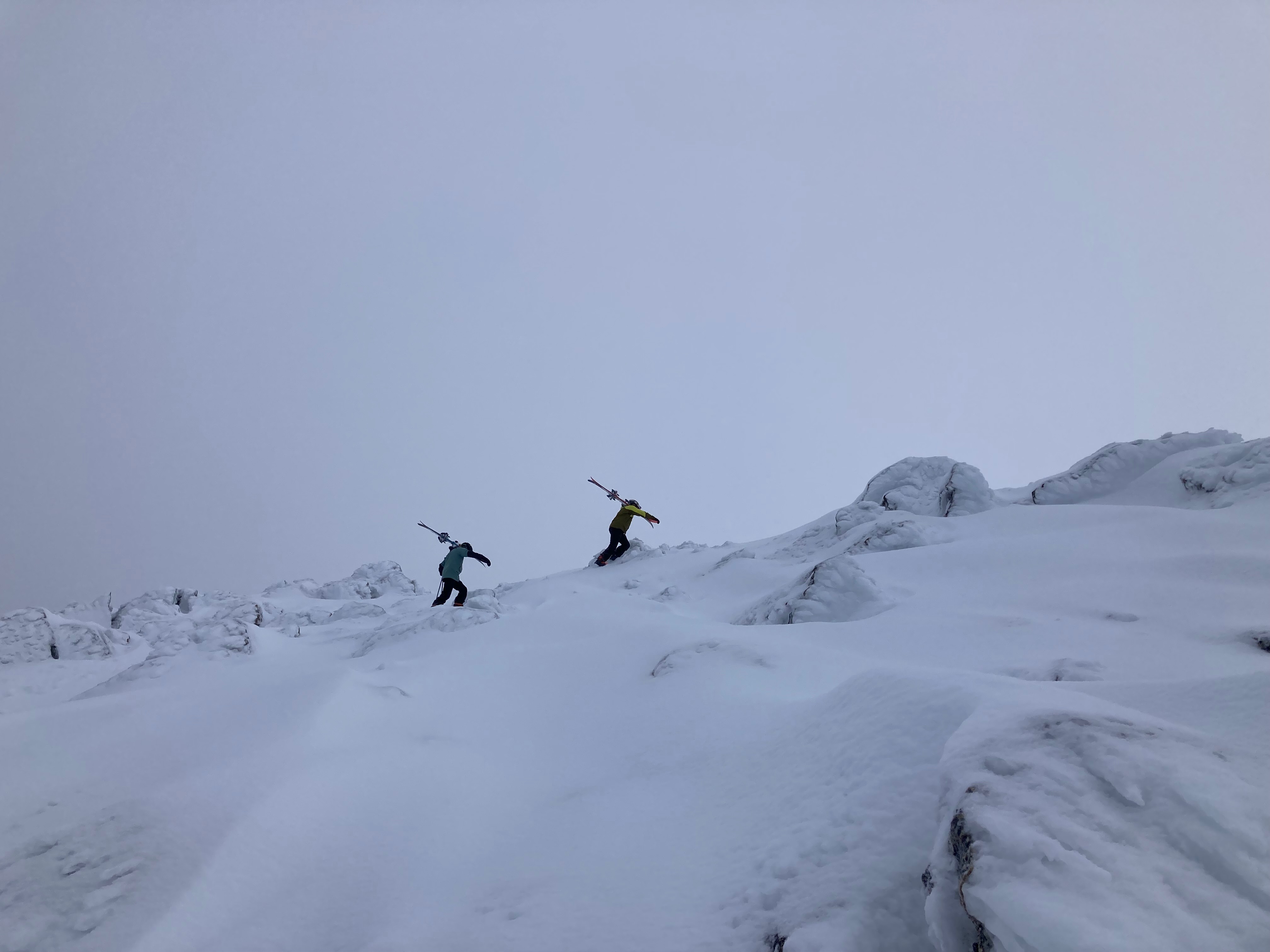Skiing gives us freedom and flow. This euphoric state is what comes with sliding on snow. In chasing that feeling, it’s important to remember the risk of injury that exists within the sport. Whether it’s a result of variable weather conditions, a lack of judgment, a collision with another, or a wrong move mixed with some bad luck, it happens. No magic solution mitigates all risks, but there are ways to significantly reduce ski-related injuries so you get the most out of the season. Let’s shred through the winter, and walk away with our knees intact, our bodies strong and our spirits high with these five ways to have an injury-free ski season.
Maintain strength off skis

Getting strong before ski season is essential, but maintaining that strength and mobility throughout the winter is just as important. When building and maintaining your strength off skis, you’ll want to focus mainly on weight training, plyometrics and balance exercises for the legs, core and back.
Dr. Jennifer Reed is a physical therapist in Denver who specializes in sports-related injuries, complex diagnoses and finding root causes of chronic pain. She says that “while general strengthening is great, it’s important to incorporate plyometrics to work on your force absorption and strengthening positions that you are going to be skiing in.”
For example, when you ski, your knees are usually pushed forward over your toes. This puts a lot of pressure on the front of the knee and patellar tendon, which often leads to irritation and injury. Getting your quadriceps strong and practicing repetition of ski-related movements will help tremendously. Plyometric exercises involve repeated jumping and rebounding to build muscle power. Some helpful plyometrics for skiing include lunges, squat jumps, single-leg bounds, lateral box jumps, oblique crunches and more.
Symmetry is key when preparing for an injury-free ski season. If you focus solely on strengthening your quadriceps, that can lead to overcompensation. “Oftentimes I see people compensating for areas of weakness that tend to put more stress on areas more prone to injury, specifically knees,” says Dr. Jen Reed. You’ll want all your muscles to be able to protect you when you get in a sticky situation. Strengthening the quads, glutes, hamstrings, calves and adductors will allow for a safer skiing experience. “Ensuring you have proper form while doing these exercises will make a huge difference in getting the most out of your ski prep,” says Dr. Reed. Use this REI article for tips and visuals that may be helpful if you’re struggling with form and mechanics.
Ease into the season

Oftentimes, ski season sneaks up on us and we’re not always fully prepared. Being that it’s only January, you have plenty of time to get strong and ease into the season. “I often see injuries happen early in the season or towards the end of the day when we are fatigued,” says Dr Reed. “Be smart about how you’re ramping up, and give your body a chance to catch up after taking the summer off.” If that means taking a few rest days, a few half days, or just clearing more time for the gym in these early months, that’s fine. As the season progresses, your body will continue to prepare for more difficult terrain and stunts.
Listen to your body on the hill
When skiing, it’s important to not lose touch with your intuition. The adrenaline and excitement of skiing can sometimes get the best of us, pushing us to pull stunts that may be beyond our skill level. Don’t get me wrong, for many people, pushing their limits is a huge part of what makes skiing so fulfilling, but the risks must be calculated and taken for the right reason. Our mind-body connection is strong, and usually, that voice telling us that “this doesn’t feel right” or “I’m not ready for this,” is talking for a reason. If you’re feeling fatigued or just mentally off, listen to that and don’t push it.
Don’t neglect rest and recovery
Taking the proper steps to allow yourself to fully recover after a long day of skiing will be huge for injury prevention. Getting at least 8 hours of sleep, stretching, rolling out, hydrating and eating nutritious foods are all simple steps to feeling strong and rested. Skiing long days on end and neglecting rest and recovery can lead to fatigue, overuse and potential season-ending situations.
Doing a dynamic warmup routine before skiing can be extremely beneficial. It prepares the muscles for use and impact by getting the blood flowing through movement stretches. Use this Back on Track article that gives examples of dynamic warm-up exercises that skiers and snowboarders can include in their routines.
Fuel yourself on the mountain

Proper nutrition is essential to keep your body energized, strong and resilient. When you’re out there working your muscles in a cold, high-altitude environment, your body uses more energy, so according to many nutrition experts, your basic caloric intake should increase by 20-30%. Come prepared with pocket snacks, like protein bars, for the chair and if you can, bring your lunch with you so you can eat whenever you need.
As Coloradans, we know it all too well; drinking enough water is key to sustained playtime in the mountains. Hydrating throughout the day is just as important as fueling your body with the right foods. When it’s cold, it’s often harder to hear cues from our body. With that in mind, drink water even if you don’t feel thirsty. You’ll feel so much better at the end of the day. Adding electrolytes to your water, like nuun packets, is also a boosted benefit that sustains your energy levels throughout the day.






My favorite article yet! This is all so important to keep in mind. Proud of you Britta!